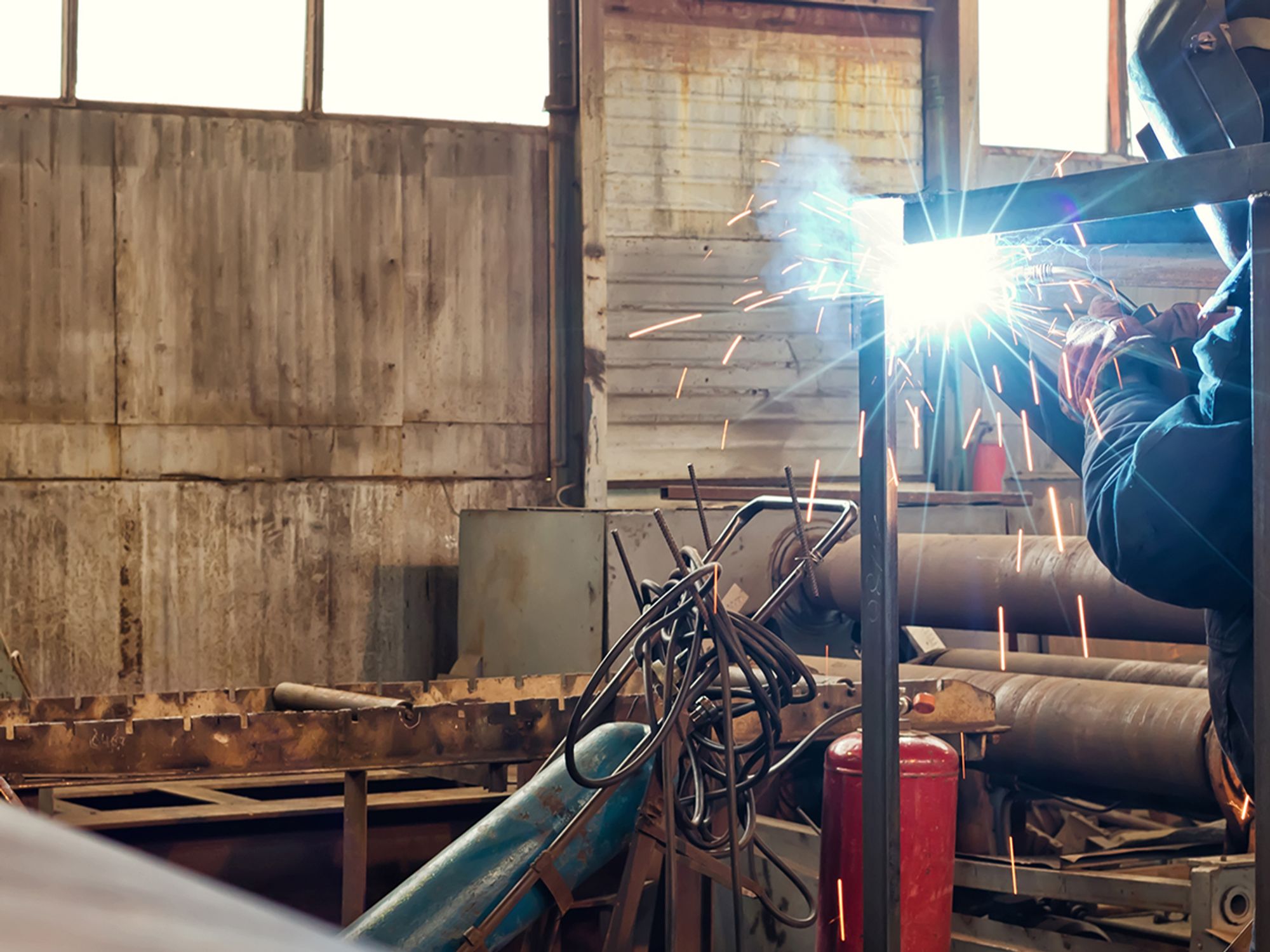Gas welding precautions

- Gas welding poses a variety of health hazards due to its association with fumes, gases, and ionizing radiation.
- Proper storage and handling of compressed gas cylinders is crucial for preventing fires and explosions.
Fumes, gases, and ionizing radiation formed or released when welding, cutting, or brazing are associated with numerous health hazards, including: heavy metal poisoning, lung cancer, metal fume fever, and flash burns.
The risks vary depending on the welding materials used and surfaces welded. The presence of oil or grease is one potential source of fire danger for gas welders. This danger can be reduced by:
- Keeping oxygen cylinders and fittings cylinder caps and valves, couplings, regulators, hose, and apparatus free from oil or greasy substances; and
- Not handling cylinders or fittings with oily/greasy hands or gloves.
Safe handling of compressed gas cylinders
Handling compressed gas cylinders safely is crucial in preventing fires and explosions. Cylinders must be stored under the proper conditions:
- Secured in an upright position at all times (except for short periods of transportation, if necessary);
- In a definitely assigned location that is:
- Well-protected, well-ventilated, and dry;
- At least 20 feet from highly combustible materials such as oil or excelsior;
- Away from radiators and other sources of heat;
- Away from elevators, stairs, and gangways; and
- Not in danger of damage from passing or falling objects, or tampering by unauthorized people.
Cylinders must be kept far enough away from a welding or cutting project so that sparks, hot slag, or flames do not reach them. When this is impractical, fire shields must be used.
Valve protection caps must be in place, hand-tight, except when cylinders are in use or connected for use. Before a regulator is connected to the cylinder valve, the valve must be cracked (opened slightly and closed immediately). This clears the valve of dust or dirt.
